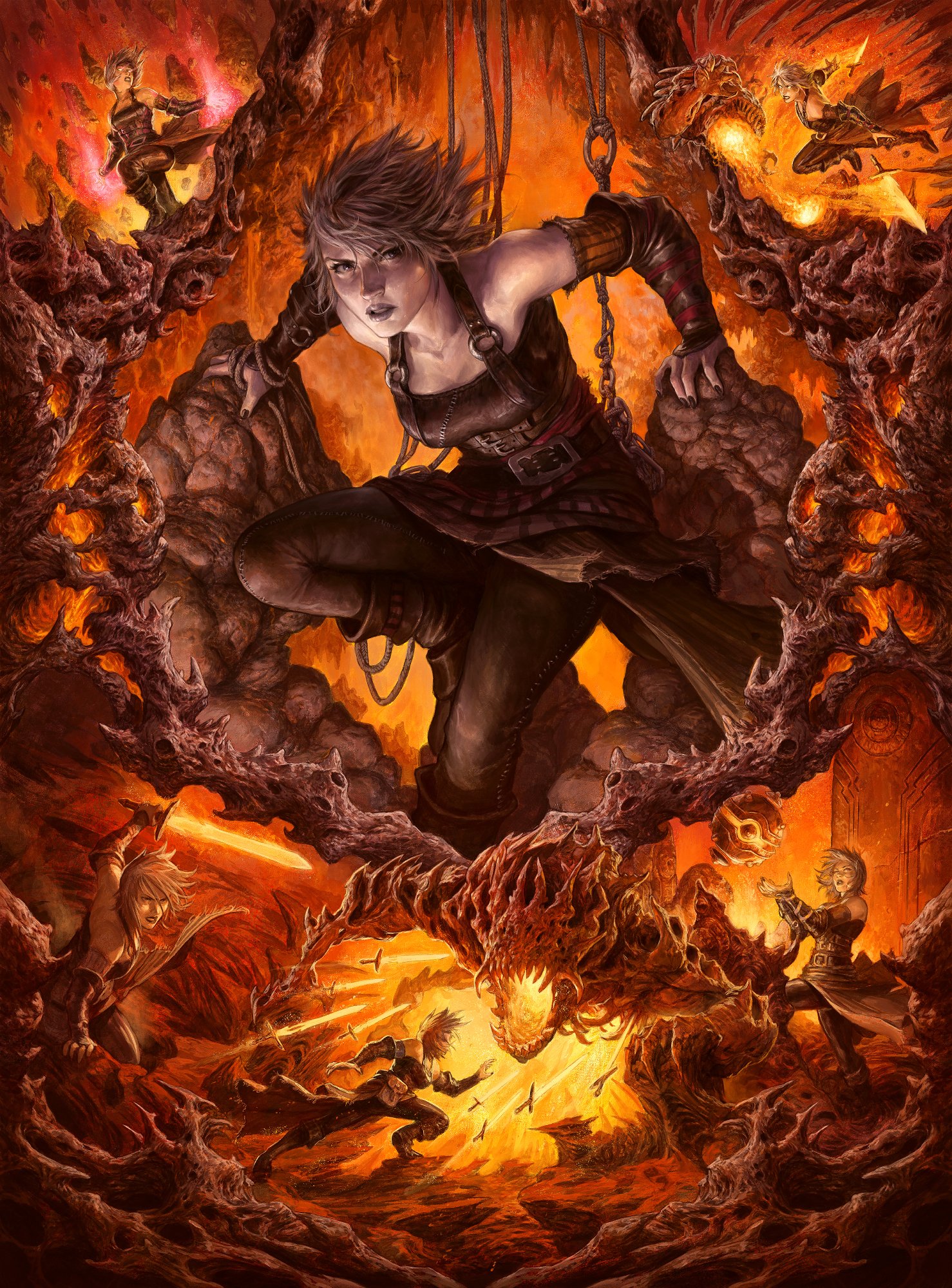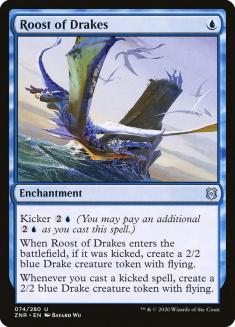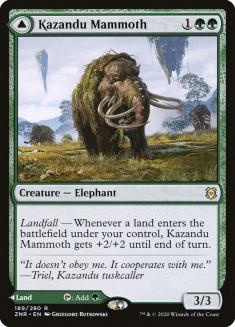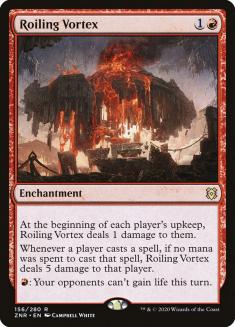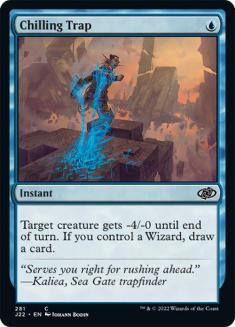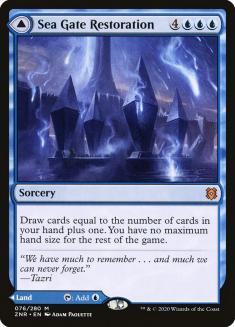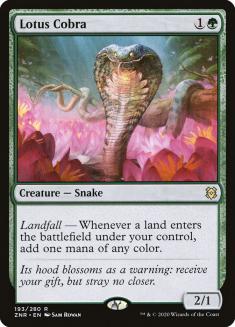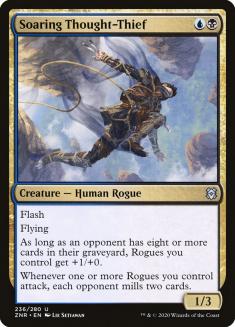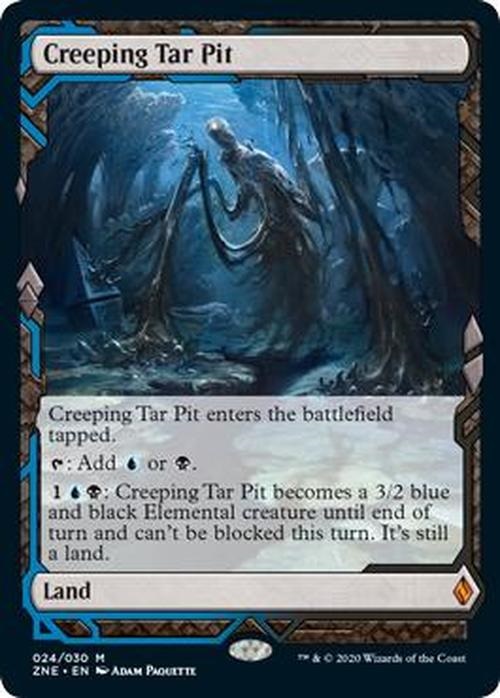Zendikar Rising is set in a dangerous world of lethal risks where brave adventurers delve into ancient ruins in search of priceless rewards. The Eldrazi may not be back but kicker and landfall are, along with the introduction of Modal Double-Faced Cards (DFCs) and the Party mechanic. And did I mention Expeditions? Because they’re back and they look as gorgeous as ever!
We’ve never seen a set like this before and who knows if we ever will again — which is all the more reason to bring a few members of the SCG Staff together to give their first impressions on Magic’s newest set in the best way possible: before playing a single game with any of the cards!
1. What’s your Tweet-length review of Zendikar Rising?
Paulo Vitor Damo da Rosa: Zendikar Rising is a very interesting set that will challenge us to throw away all our preconceived notions about the correct way to build a manabase. I’m hoping in the end it stands on its own rather than being swallowed entirely by Uro, Titan of Nature’s Wrath.
Ryan Overturf: Battle for Zendikar missed all of the notes that I liked about the original installment, and Zendikar Rising pulled us most of the way back home. I don’t think it will go down as one of the greatest sets of all time, but there are cool designs and I’m happy to not see Oko or Uro.
Ross Merriam: Zendikar Rising will fundamentally change how we build decks. We’ve never seen how Magic works when decks can effectively play 20 and 35 lands simultaneously and I’m excited to tackle the problem, push the boundaries of what’s possible, and see how others do too.
Shaheen Soorani: Modal DFCs are the best things to happen for control in a very long time. I do not mind aggro decks getting a little boost when flooding, able to cash in an over-costed effect. Over-costed effects are control’s bread and butter, and now control has the security blanket of hitting land drops with it. Seven mana to draw a couple of cards a few times in a tournament? Sign me up! Top the modal DFCs off with a powerful, blue, three-mana planeswalker, and this control mage is ready to get to work.
Ari Lax: Zendikar was a set heavily inspired by Indiana Jones, a world that can rapidly escalate into quests, traps, and treasure in a way that you felt across the cards. Zendikar Rising feels like it was inspired more by the 2017 Jumanji remake, with a group of adventurers derping around and the word “land” on half the cards because it looks cool.
Not saying that Jumanji wasn’t a great use of 100 minutes on a plane ride home from Europe, but it’s not iconic.
2. What’s your most-liked card in Zendikar Rising?
Paulo Vitor Damo da Rosa: Roost of Drakes. I don’t think it’s the best card in the set (not by a long shot), but I have an incomprehensible fascination with probably-not-good-enough build-arounds for types of mechanics I like, and kicker is such a mechanic. I expect this card will certainly be the one I will spend the most time trying to make work. I will also probably fail.
Honorable mention goes to Legion Angel, which I think is an unique effect that explores sideboarding in a very interesting way and that presents a deckbuilding challenge we’ve never seen before.
Ryan Overturf: Kargan Intimidator. At a Time Spiral Block draft about a decade ago, somebody at my LGS cast a Boldwyr Intimidator and shouted “COWARDS CAN’T BLOCK WARRIORS!” Every time I read the line I hear it in his voice, and I’m reminded of simpler times. I also love seeing a cheap three-power creature to toss an Embercleave onto.
Ross Merriam: Magmatic Channeler. After spending years working with Todd Anderson I’ve been infected with the Izzet bug, and I can’t resist one that generates card advantage early and then morphs into an efficient attacker when it’s closing time. That second part is critical, and one of the reasons I’ve been consistently disappointed by Dreadhorde Arcanist. Channeler can also build around discard and graveyard synergies, so while it’s not the most flat-out powerful card, it’s extremely versatile, and that’s where I like to be.
You can be damn sure I’ll be trying to resurrect Arclight Phoenix in Pioneer with this one and yelling at my screen each time I exile one on Turn 3.
Shaheen Soorani: It is easily Sea Gate Restoration. This modal DFC bomb checks all the boxes for me: an expensive sorcery, an untapped land, and a contentious topic on Twitter surrounding its power level. The hate that this card has received only fuels my desire to showcase it in the new Standard, but luckily, I will not have to.
Sea Gate Restoration will be in every blue deck moving forward in Standard. It may not be an automatic three- or four-of; however, it will quickly hit staple status. The road to victory for blue decks is hitting land drops, and when too many are drawn, Sea Gate Restoration provides a quick recovery. There will be games where it is drawn early, minimal disruption is used prior, and on Turn 7 you find yourself with twelve cards in hand and not having to discard. That is the power of this spell and those that do not see it now will soon realize their error.
Ari Lax: I’m just in love with Kazandu Mammoth. I love winning games of Magic that look like the ones it plays, and it is targeted against the best removal spells in the format in a really stupid way. Has Gnarled Mass ever been a good card against removal except right now where Bloodchief’s Thirst and Stomp lead the way? If it is the best card of the set (like I suspect it might be), we are going to playing good games of Magic for a long time.
3. What’s your most-hated card in Zendikar Rising?
Paulo Vitor Damo da Rosa: Base Camp, because it’s a constant reminder of what could have been. Multicolored aggressive decks have struggled with their manabases for years now, which is part of why we keep seeing Mono-Green, Mono-Red, and even Mono-Black even though the cards in these aggro decks mash very well together (think Questing Beast + Embercleave, for example, which is a powerful combination that struggles because all the multicolored lands enter the battlefield tapped).
Base Camp was the chance to make an actual good land for multicolored aggressive decks that didn’t help control or ramp decks more, and instead they gave it the deal-breaker downside of entering the battlefield tapped. It could have been a Standard player if it just did something like deal one damage instead, it could actually facilitate a Party deck in Constructed, and now it’s just a Limited card and that likely dooms the entire party mechanic to Limited-only alongside it.
Ryan Overturf: Wayward Guide-Beast. I have already read several paragraphs from people who know better about how this card has its uses, but I just can’t remember the last time Standard was about dancing around drawbacks on low-impact cards. I was the only one brave enough to call the card a turd in last week’s Fact or Fiction, and I’m incensed that I lost the vote on that one.
Ross Merriam: Omnath, Locus of Creation. I’m sick of how much access to mana acceleration there is these days, and Omnath in combination with Fabled Passage is going to lead to absurd turns. Normally this wouldn’t be that much of a problem, but between the aforementioned Passage, Triomes, and Lotus Cobra, casting a four-color card on Turn 3 or 4 is surprisingly easy.
I was optimistic going into the preview season that Simic fast mana decks would take enough of a hit losing Hydroid Krasis and Nissa, Who Shakes the World that Uro might be held in check. With Omnath, Lotus Cobra, and subtly powerful role-player Tangled Florahedron joining the dark side, I’m less confident of that now.
Shaheen Soorani: I really hate Roiling Vortex. This is one of those cards that will probably not see the light of day in aggro decks, but if it does, it will be exceptionally good against decks I champion. This is no Sulfuric Vortex and for good reason. Control decks weren’t the only decks hit by the weakening of spells, so red mages out there, enjoy your nerfed spellbook. If it is not a creature, it will be a shell of what it used to be from years ago. Even with this watered-down version, control needs to be prepared for this repeatable damage and lifegain prevention.
Ari Lax: Chilling Trap. How can you print a conditional blue combat trick, name it after the trap mechanic from original Zendikar, and then make it do something completely different? There’s literally unnamed ninjutsu in the set and a “Cowards can’t block Warriors” line for no reason other than to say “The cake is a lie” when it has no real reference to the set. Actually reference the Zendikar source material — that’s the point of using the plane of Zendikar.
4. Rank the mythic modal DFCs from first to worst.
Paulo Vitor Damo da Rosa:
- Agadeem’s Awakening. Of all the mythic modal DFCs, Agadeem’s Awakening is the only one that I feel could actually see play on its own in certain universes — the effect is quite powerful and not just a “worse something else” like the other four. Adding it to a land that enters the battlefield untapped makes me certain it’s going to see play, likely in a lot of different formats – the Historic Mono-Black Gift deck that I wrote about this week would clearly play it, for example.
- Emeria’s Call. As stated before, I like my flexible cards to be good in multiple phases of the game, and I think Emeria’s Call is that — early on it’s just a land, and later on it’s a very powerful effect that can catch you back from a losing position or close out the game. It suffers a bit from the fact that it’s not the most appealing effect in Mono-White decks, since those are usually aggressive, but it’ll still be very good in any W/X control deck.
- Turntimber Symbiosis. A big problem with ramp decks are that they often draw all lands and no payoff or all payoff and no lands. Turntimber Symbiosis can be both land and payoff, and slot perfectly into a ramp deck. I think it’s weaker than the other two in Standard, but it would not surprise me if it ended up being the best in older formats, since it’s quite strong alongside Primeval Titan (and in fact could just immediately slot into Amulet Titan decks).
- Shatterskull Smashing. I think this card can easily see play (and in fact it would surprise me if it didn’t), but I just like the others more.
- Sea Gate Restoration. I like my flexible cards to be good in all spots of the game (that’s why I want flexibility), and Sea Gate Restoration has two sides that are pretty bad topdecks, so I like it less than the others. Also at this point I’d feel compelled to rank this last even if I didn’t think that was the case just to spite Shaheen.
Ryan Overturf:
- Emeria’s Call
- Turntimber Symbiosis
- Agadeem’s Awakening (Though Sam might be right. If he is, I am sorry.)
- Shatterskull Smashing
- Sea Gate Restoration (Shaheen, I am not sorry.)
I haven’t really mapped out where, but I’m pretty confident that Emeria’s Call will end up ranking as one of the best white cards of all time in terms of Standard play, in addition to being a Commander and Cube staple. I think Turntimber Symbiosis and Agadeem’s Awakening are also great, but I feel really shafted as an Izzet player by the blue and red offerings.
Ross Merriam:
If you had asked me this two days ago I would’ve had Shatterskull Smashing on top, but Agadeem’s Awakening has grown a lot on me and it has by far the most potential in older formats like Modern and Pioneer, so it gets the top spot. I think Shatterskull Smashing is an easy second and those two are in a tier by themselves since the spells are effective at less than seven mana but comparably powerful at that level. Awakening is the best at those early stages, and Agadeem itself could be a player alongside Death’s Shadow and Scourge of the Skyclaves.
Emeria’s Call and Turntimber Symbiosis are in the next tier, since they’re more expensive and thus less versatile than the best ones, but their effects are still powerful. Emeria’s Call getting two bodies and thus being harder to answer gives it the nod. I’m also more skeptical of Symbiosis because part of the appeal of playing these cards is the ability to trim other expensive spells and have more consistent action in the early and middle stages of the game, but maximizing its effect requires you to build your deck in the opposite way.
Sea Gate Restoration is by far the worst of the cycle. I want my expensive spells to affect the battlefield and this one doesn’t. It’s not reliably effective, since when you draw it late and your hand is empty it only cycles. You could hold lands to make it a better topdeck but then you won’t be able to deploy the cards you draw immediately. And lastly, when it is at its best, i.e. when you are resolving a seven-mana sorcery with a substantial hand, it’s likely a win-more. The opportunity cost is low enough that I expect it’ll see play, but it’s not nearly the draw that the others are.
Shaheen Soorani: Oh I would love to!
- Turntimber Symbiosis (thanks Primeval Titan…)
- Sea Gate Restoration
- Emeria’s Call
- Shatterskull Smashing
- Agadeem’s Awakening
Ari Lax:
- Agadeem’s Awakening. The scaling of this effect allows it to turn around a wide range of games. Might end up a bit lower but certainly highest potential.
- Emeria’s Call. Control finisher that immediately stabilizes battlefields, is good against spot removal, and most importantly doesn’t clunk up your opener. Broodmate Dragon was still good in a really powerful format; this will surely hit.
- Turntimber Symbiosis. Kinda like Eye of Ugin before Thought-Knot Seer. Land-whammy split cards are good stuff.
- Shatterskull Smashing. Going to be overplayed at first. Crushing in aggressive matchups, but the spell is not good against too many decks.
- Sea Gate Restoration. I almost said this was my most-hated card to just hammer it home to Shaheen that it’s bad, but I got to talk about that here instead.
5. The most powerful card in Zendikar Rising with landfall is…
Paulo Vitor Damo da Rosa: Felidar Retreat. I think that card is quite strong and I wrote about it here. There are other contenders, though — it would not surprise me if either of Omnath, Locus of Creation or Kazandu Mammoth ended up being the best.
Ryan Overturf: Lotus Cobra. Kazandu Mammoth and Felidar Retreat are quite powerful, but I stole the answer sheet on this one.
Ross Merriam: Lotus Cobra. Omnath is a lot flashier, but Lotus Cobra demands so little of your deck while still having the ability to dominate a game. I was initially skeptical of this card, since so much of its power in its previous life was derived from its interaction with fetchlands, but now that I’ve seen the full set I think players are going to be looking at effects like Dryad of the Ilysian Grove and Azusa, Lost but Seeking because they have artificially high land counts that can leverage them. That means Lotus Cobra is coming along for the ride, and we’re going to need to prepare with plenty of early interaction.
Shaheen Soorani: Lotus Cobra is the landfall champion of Zendikar Rising. Phylath, World Sculptor and Omnath, Locus of Creation have the bells and whistles that gain our attention; however, Lotus Cobra is the king Snake that we know can produce. Back in the day, decks cast spells way too early on the back of Lotus Cobra while utilizing it in combat. Without fetchlands in Standard, this burst of mana will be toned down, but still deadly.
Ari Lax: Omnath, Locus of Creation. Often free to cast, cantrip, ramping, repeatably life-gaining threat sounds a bit familiar and a bit too on the nose to not just call out at the best thing. Kazandu Mammoth and Nissa of Shadowed Boughs are also in the discussion.
6. Rogues in Zendikar Rising Standard – Contender or Pretender?
Paulo Vitor Damo da Rosa: I think the answer to this question depends almost exclusively on how prevalent Uro, Titan of Nature’s Wrath is. I think all the cards for a good Rogue deck are there — the tribe has some really powerful stuff going on — but Uro counters it in a way that few cards have ever countered a strategy before. When you mill them and they have an Uro, not only are you giving them an Uro but they’re also turning off all your abilities by making their graveyard smaller. The fact that they don’t even need to draw the Uro (you can mill it for them) is icing on the cake. Given how strong Uro is, I’m going to say it’s a Pretender, but if the format shies away from Uro for some reason (or if it just gets banned) then I think it immediately becomes a contender.
Ryan Overturf: Pretender. I don’t want to mill my opponent if they might hit a Woe Strider. Multiply that by a billion if they might have an Uro. My favorite Rogue in the set is Glasspool Mimic by a wide margin. Insert clever joke about mimics and pretending here.
Ross Merriam: Pretender. Nothing would make me happier than to see a tricky, Grixis-ish aggro deck among the top tiers of Standard, but the pieces aren’t there. If you want to play a tribal deck, it’s all in the tribal payoffs and Soaring Thought-Thief and Thieves’ Guild Enforcer aren’t enough of a draw. It honestly might have been if it didn’t exist in the same format as escape, which is a powerful mechanic that nearly every deck takes advantage of, and is a huge punisher for mill effects.
The other pseudo-payoff is Zareth San, the Trickster, but that card is powerful enough to see play in a non-tribal shell and still be effective.
Shaheen Soorani: Pretender. Although Nighthawk Scavenger is a fantastic card, the supporting cast of a Rogue strategy is mediocre at best. This reminds me of the Dimir Flash decks that tried to infiltrate competitive Standard not too long ago. The elements of the deck were great against clunky control and poorly-run aggressive decks, but it was never enough to overcome the most powerful roadblocks in the format. Even looking at the new additions now, the common theme of milling an opponent to increase creature size or snag a creature is simply not enough. There will be attempts at crafting a competitive Dimir Rogues deck in Standard, but the result will be another bench-rider on the Tier 2 shelf.
Ari Lax: Holy crap no. This is the same stupid “curve of random creatures with a theme” deck that every set tells you to build. Then everyone does build it and it fails horribly to someone just casting good cards at the same costs. The only exception is if it has some absurd extra angle to hammer home, like when Gruul had Embercleave or Become Immense, or if the cards are all individually busted, like Dimir Faeries. Gerry’s article about Rogues literally says “Maybe if we had creatures that were powerful,” and that should have been your clue it wasn’t working.
7. The coolest-looking Zendikar Rising Expedition is…
Paulo Vitor Damo da Rosa: Wasteland. The art is just so powerful and really evokes what I imagine a Wasteland to be. It sort of reminds me of Fantasia crumbling away in The NeverEnding Story. I’m also a big fan of Valakut, the Molten Pinnacle and Prismatic Vista. My favorite “special” art in the set is actually the alternate art Lotus Cobra though. It’s one of the coolest looking cards in recent memory.
Ryan Overturf: Creeping Tar Pit. The original art for Creeping Tar Pit is certainly eerie. Creepy even. But does it itself creep? Hard to say. The new Expedition art though? That thing is unquestionably creeping.
Ross Merriam: It’s a Tie. Have I looked at any of the Zendikar Rising Expeditions? No, and you can’t make me. But I do know that every Expedition looks exactly the same, in that I can’t for the life of me differentiate them on a battlefield. It’s absolutely infuriating and I hate Expeditions because of it. If you play Expeditions in your deck at a competitive tournament, I hope you 0-2 drop.
Shaheen Soorani: I may be biased, but the Flooded Strand Expedition is gorgeous. It is a close call between that and Celestial Colonnade, showing the years of Azorius dedication taking control of my senses. What I do know is I will own both cards and beg my wife to allow me to purchase the rest of the Esper Control gang in the (near) future…
Ari Lax: Creeping Tar Pit. The look of the creature-lands being distinctly creature-y is great with the distinctly land frame. Honorable mentions to Blackcleave Cliffs, which is nice but doesn’t feel super-specific, and Wasteland, which is artistically great but looks too much like it’s killing Sol Ring for full marks. Dishonorable mention to the fetchlands, which now have two completely indiscernible Expedition arts and a Secret Lair art. I wish coverage the best of luck with that.

